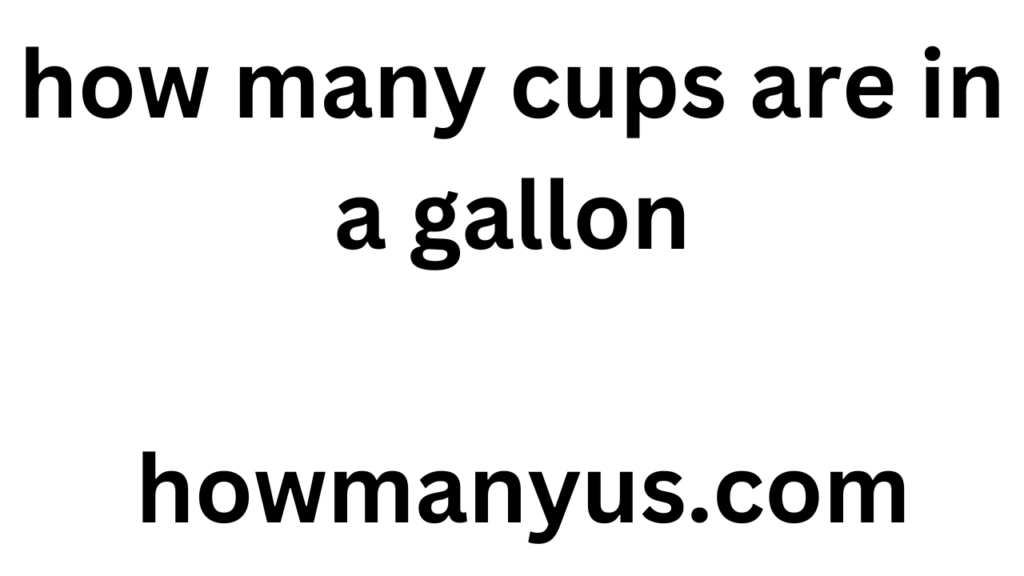how many cups are in a gallon

how many cups are in a gallon: In the realm of culinary measurements, understanding conversions is crucial, especially when dealing with vast quantities like gallons and cups. So, let’s dive into the arithmetic behind this conversion.
how many cups are in a gallon: To start, we need to establish the volume of a gallon and a cup. In the United States, where the customary system is prevalent, a gallon is equivalent to 128 fluid ounces. Meanwhile, a cup holds 8 fluid ounces.
how many cups are in a gallon: Now, armed with these values, we can proceed to calculate the number of cups in a gallon. Since there are 128 fluid ounces in a gallon and 8 fluid ounces in a cup, we can set up a simple proportion to find the answer.
Let’s set up our equation:
(128 fluid ounces / 1 gallon) = (x cups / 1 gallon)
We’re solving for ‘x,’ which represents the number of cups in a gallon. Cross-multiplying, we have:
128 fluid ounces * 1 cup = x cups * 1 gallon
Simplifying this equation, we get:
x = 128 cups / 1 gallon
Therefore, there are 128 cups in a gallon.
how many cups are in a gallon: Understanding this conversion is not only useful in the kitchen but also in various industries, such as agriculture, manufacturing, and even science. For instance, in agriculture, knowing how many cups of water a gallon can hold is vital for irrigation purposes. Similarly, in manufacturing, this conversion might be necessary when determining the volume of liquid products in gallons and their respective packaging in cups.
Moreover, in scientific experiments where precise measurements are paramount, researchers often deal with large quantities of liquids. Being able to convert between gallons and cups accurately ensures the integrity of their findings and the reproducibility of their experiments.
Practical applications aside, understanding conversions between gallons and cups can also foster a deeper appreciation for mathematics. It showcases the utility of mathematical concepts in everyday life and highlights the interconnectedness of various fields of study.
In conclusion, there are 128 cups in a gallon, a conversion crucial for culinary endeavors, agricultural practices, manufacturing processes, scientific experiments, and beyond. Mastering this conversion empowers individuals to navigate diverse contexts where volume measurements play a pivotal role, enriching both their practical skills and mathematical acumen.

1 Answer